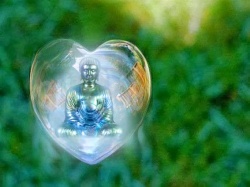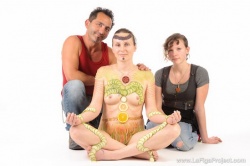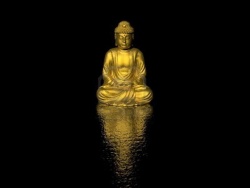Difference between revisions of "Manodvara"
(Created page with " <poem> When one of the six senses enters the avenue of the mind-door, manodvara vithi ensues. Manodvara vithi may first be divided into two classes. ...") |
m (Text replacement - "]]]" to "]])") |
||
| (3 intermediate revisions by 2 users not shown) | |||
| Line 1: | Line 1: | ||
| − | + | {{DisplayImages|1449|3728|401|122|3903}} | |
<poem> | <poem> | ||
| − | When one of the [[six senses]] enters the avenue of the [[mind-door]], [[manodvara]] [[vithi]] ensues. [[Manodvara | + | When one of the [[six senses]] enters the avenue of the [[mind-door]], [[manodvara]] [[vithi]] ensues. [[Manodvara vithi]] may first be divided into two classes. |
| − | 1. Kamajavana-vara | + | 1. [[Kamajavana-vara vithi]] - here one of the 29 [[kama-javana]] [[cittas]] takes the [[function]] of [[javana]], i.e., enjoying the {{Wiki|taste}} of the [[sense-object]]. |
| − | 2. Appanajavana-vara | + | 2. [[Appanajavana-vara vithi]] - here one of the 26 [[appana-javana]] [[cittas]] takes the [[function]] of [[javana]]. |
| − | Kamajavana-vara | + | [[Kamajavana-vara vithi]] may further be divided into four types (as described in the scheme in Dr. Mon's [[book]] on page 154) whereas [[appana-javana-vara vithi]] may be subdivided into two types - namely, [[loki-appana vithi]] and [[lokuttara ppana vithi]]. All these [[vithis]] will be explained below. |
Kama-javana Mano-dvara Vithis | Kama-javana Mano-dvara Vithis | ||
| − | 1. Ativibhuta-rammana | + | 1. [[Ativibhuta-rammana vithi]] ([[Tadalambana-vara vithi]]) |
"Na-Da-Ma-Ja-Ja-Ja-Ja-Ja-Ja-Ja-Da-Da" -Bha- | "Na-Da-Ma-Ja-Ja-Ja-Ja-Ja-Ja-Ja-Da-Da" -Bha- | ||
| − | 2. Vibhuta-rammana | + | 2. [[Vibhuta-rammana vithi]] ([[Javana-vara vithi]]) |
"Na-Da-Ma-Ja-Ja-Ja-Ja-Ja-Ja-Ja" -Bha-Bha- | "Na-Da-Ma-Ja-Ja-Ja-Ja-Ja-Ja-Ja" -Bha-Bha- | ||
| − | 3. Avibhuta-rammana | + | 3. [[Avibhuta-rammana vithi]] ([[Votthapana-vara vithi]]) |
"Na-Da-Ma-Ma-Ma" -Bha-Bha-Bha | "Na-Da-Ma-Ma-Ma" -Bha-Bha-Bha | ||
| − | 4. Ativibhuta-rammana | + | 4. [[Ativibhuta-rammana vithi]] ([[Mogha-vara vithi]]) |
"Na-Na" - Bha-Bha-Bha- | "Na-Na" - Bha-Bha-Bha- | ||
Explanation | Explanation | ||
| − | One of the six [[sense-objects]] which may be {{Wiki|present}}, {{Wiki|past}}, {{Wiki|future}} or time-freed, must enter the avenue of the [[mind-door]] to initiate the kama-javana mano-dvara vithis. | + | One of the six [[sense-objects]] which may be {{Wiki|present}}, {{Wiki|past}}, {{Wiki|future}} or time-freed, must enter the avenue of the [[mind-door]] to initiate the [[kama-javana mano-dvara vithis]]. |
| − | 1. When the [[sense-object]] is of very great intensity, the life-continuum vibrates twice and becomes arrested (Na-Da) on the [[appearance]] of the [[sense-object]] at the [[mind-door]]. Then mano-dvara-vajjana (Ma) adverts the [[consciousness]] {{Wiki|stream}} towards the [[sense-object]], observes the [[object]] and decides whether it is good or bad. | + | 1. When the [[sense-object]] is of very great intensity, the life-continuum vibrates twice and becomes arrested (Na-Da) on the [[appearance]] of the [[sense-object]] at the [[mind-door]]. Then [[mano-dvara-vajjana]] (Ma) adverts the [[consciousness]] {{Wiki|stream}} towards the [[sense-object]], observes the [[object]] and decides whether it is good or bad. |
| − | In accordance with this [[decision]], one of the 29 kama-javana [[cittas]] performs the [[javana]] [[function]] for seven [[conscious]] moments enjoying the {{Wiki|taste}} of the [[sense-object]]. Then two tadalambana [[cittas]] follow suit enjoying the {{Wiki|taste}} of the [[sense-object]]. Then two tadalambana [[cittas]] follow suit enjoying the {{Wiki|taste}} of the [[sense-object]] further. After that, [[bhavanga cittas]] sink into life-continuum. | + | In accordance with this [[decision]], one of the 29 [[kama-javana]] [[cittas]] performs the [[javana]] [[function]] for seven [[conscious]] moments enjoying the {{Wiki|taste}} of the [[sense-object]]. Then two [[tadalambana]] [[cittas]] follow suit enjoying the {{Wiki|taste}} of the [[sense-object]]. Then two [[tadalambana]] [[cittas]] follow suit enjoying the {{Wiki|taste}} of the [[sense-object]] further. After that, [[bhavanga cittas]] sink into life-continuum. |
| − | This [[vithi]] is known as "ativibhuta-rammana | + | This [[vithi]] is known as "[[ativibhuta-rammana vithi]]" or [[tadalambana-vara vithi]] as it terminates with [[tadalambana vithi]]. |
2. When the [[sense-object]] is of fairly great intensity, the [[Wikipedia:cognition|cognitive]] series occurs as above but terminates with [[javana]] [[citta]] without tadalambana. This [[vithi]] is known as vibhuta-rammana [[vithi]]" or "javana-vara [[vithi]]". | 2. When the [[sense-object]] is of fairly great intensity, the [[Wikipedia:cognition|cognitive]] series occurs as above but terminates with [[javana]] [[citta]] without tadalambana. This [[vithi]] is known as vibhuta-rammana [[vithi]]" or "javana-vara [[vithi]]". | ||
| − | 3. In the "avibhuta-rammana [[vithi]]", the [[sense object]] is of slight intensity and its [[appearance]] at the [[mind-door]] is not clear as in the above two cases. Thus after the life-continuum is arrested, mano-dvaravajjana [[citta]] occurs three times trying to observe and decide the [[sense-object]]. But the [[object]] is not precisely known and consequently no [[javana]] [[cittas]] occur to enjoy the {{Wiki|taste}} of the [[sense object]]. After mano-dvaravajjana, [[bhavanga citta]] sinks into life-continuum. | + | 3. In the "[[avibhuta-rammana]] [[vithi]]", the [[sense object]] is of slight intensity and its [[appearance]] at the [[mind-door]] is not clear as in the above two cases. Thus after the life-continuum is arrested, [[mano-dvaravajjana]] [[citta]] occurs three times trying to observe and decide the [[sense-object]]. But the [[object]] is not precisely known and consequently no [[javana]] [[cittas]] occur to enjoy the {{Wiki|taste}} of the [[sense object]]. After [[mano-dvaravajjana]], [[bhavanga citta]] sinks into life-continuum. |
| − | This [[vithi]] is known as "votthapana-vara [[vithi]]" as it terminates with [[votthapana]] [[citta]]. | + | This [[vithi]] is known as "[[votthapana-vara]] [[vithi]]" as it terminates with [[votthapana]] [[citta]]. |
| − | 4. In the atiavibhuta-rammana [[vithi]], the [[sense-object]] is of very slight intensity. It can only [[cause]] the life-continuum to vibrate twice without becoming arrested. So no [[vithi]] [[cittas]] occur and the [[sense-object]] is not known. | + | 4. In the [[atiavibhuta-rammana]] [[vithi]], the [[sense-object]] is of very slight intensity. It can only [[cause]] the life-continuum to vibrate twice without becoming arrested. So no [[vithi]] [[cittas]] occur and the [[sense-object]] is not known. |
| − | This [[vithi]] is called "mogha-vara | + | This [[vithi]] is called "[[mogha-vara vithi]]" as it is deprived of [[vithi]] [[cittas]]. |
Notes: | Notes: | ||
| − | 1. The [[mind-door]] (mano-dvara) is not a [[physical]] door; one of the 19 [[bhavanga-cittas]] is functioning as the [[mind-door]] in a [[person]]. | + | 1. The [[mind-door]] ([[mano-dvara]]) is not a [[physical]] door; one of the 19 [[bhavanga-cittas]] is functioning as the [[mind-door]] in a [[person]]. |
2. All the six [[sense-objects]] which may be {{Wiki|past}}, {{Wiki|present}}, {{Wiki|future}} of time-freed, can appear at the [[mind door]]. | 2. All the six [[sense-objects]] which may be {{Wiki|past}}, {{Wiki|present}}, {{Wiki|future}} of time-freed, can appear at the [[mind door]]. | ||
| − | 3. As the mind-object such as [[cittas]], [[cetasikas]], kasina-nimittas or [[nibbana]] itself may appear at the [[mind-door]], no | + | 3. As the mind-object such as [[cittas]], [[cetasikas]], [[kasina-nimittas]] or [[nibbana]] itself may appear at the [[mind-door]], no [[atita bhavanga]] need occur; the [[object]] appears at the [[mind-door]] as soon as it strikes the door. |
| − | 4. The [[objects]] that appear at the [[mind-door]] should not be differentiated as [[atimahanta-rammana]] or [[mahanta-rammana]]; they should be differentiated as vibhuta-rammana (clear [[object]]) or avibhuta-rammana (obscure [[object]]). | + | 4. The [[objects]] that appear at the [[mind-door]] should not be differentiated as [[atimahanta-rammana]] or [[mahanta-rammana]]; they should be differentiated as [[vibhuta-rammana]] (clear [[object]]) or [[avibhuta-rammana]] (obscure [[object]]). |
| − | In the "Summary of the Topics of | + | In the "[[Summary of the Topics of Abhidhamma]]" called "[[Exposition of the Topics of Abhidhamma]]" (translated by [[R.P. Wijeratne]] and {{Wiki|Rupert Gethin}} 2002: pp. 134-135) it is written: |
"However, when a clear [[object]] comes into range at the [[mind-door]], after that, [following] vibrating of the existence-continuum and adverting to the [[mind-door]], at the conclusion of {{Wiki|impulsion}}, resultants retaining that [[object]] occur. After that there is lapse into existence-continuum. | "However, when a clear [[object]] comes into range at the [[mind-door]], after that, [following] vibrating of the existence-continuum and adverting to the [[mind-door]], at the conclusion of {{Wiki|impulsion}}, resultants retaining that [[object]] occur. After that there is lapse into existence-continuum. | ||
| Line 57: | Line 57: | ||
"In this case the process [[consciousnesses]] are stated as just three and the arisings of [[consciousness]] as ten, but one should explain that there are in full forty-one. | "In this case the process [[consciousnesses]] are stated as just three and the arisings of [[consciousness]] as ten, but one should explain that there are in full forty-one. | ||
| − | "In this case: at the [[mind-door]] there are forty-one [types of [[consciousness]] | + | "In this case: at the [[mind-door]] there are forty-one [types of [[consciousness]]) since thirteen [[consciousnesses]], namely the twice-five [[consciousnesses]] and the three mind-elements which are specific to the five [[sense-door]], do not occur. |
(Wijeratne and Gethin 2002: pp. 226-227) ..."the production of [[communication]] by [[mind-door]] adverting will be explained. [[Verbal]] [[communication]] is a single [[alteration]] in the consciousness-produced [[earth-element]] which [[causes]] changes in the {{Wiki|voice}}; this becomes the [[condition]] for its striking against the grasped materialities at the place where {{Wiki|syllables}} are produced. But what will be said here should be understood in accordance with the method stated for [[bodily]] [[communication]]. | (Wijeratne and Gethin 2002: pp. 226-227) ..."the production of [[communication]] by [[mind-door]] adverting will be explained. [[Verbal]] [[communication]] is a single [[alteration]] in the consciousness-produced [[earth-element]] which [[causes]] changes in the {{Wiki|voice}}; this becomes the [[condition]] for its striking against the grasped materialities at the place where {{Wiki|syllables}} are produced. But what will be said here should be understood in accordance with the method stated for [[bodily]] [[communication]]. | ||
| − | "The difference is this. Where it was stated in the case of [[bodily]] [[communication]] that [it follows'] 'immediately after hearing the [[sound]] that is being heard'. And since there is no stiffening, etc., in the case of the latter, the statements about what is produced by the seventh {{Wiki|impulsion}} are not relevant. For [[sound]] arises simply with the striking together, and striking together is also obtained with the first and subsequent impulsions. It is as when, having climbed up high and seen the [[visible forms]] of [[sandalwood]] and palm leaves, one has by means of the [[mind-door]] process which occurs immediately following this - though the gap is not noticed - a [[thought]] of the kind associating [[water]] with [[sandalwood]] [leaves], etc., and apprehends [[water]]; similarly, having apprehended the {{Wiki|sounds}} being uttered and the [[body]] being moved, one apprehends the alterations accompanied by [[intention]] by means of the [[mind-door]] process which occurs immediately following this - though the gap is not noticed - and has as its support its connection with what was accomplished by the earlier | + | "The difference is this. Where it was stated in the case of [[bodily]] [[communication]] that [it follows'] 'immediately after hearing the [[sound]] that is being heard'. And since there is no stiffening, etc., in the case of the latter, the statements about what is produced by the seventh {{Wiki|impulsion}} are not relevant. For [[sound]] arises simply with the striking together, and striking together is also obtained with the first and subsequent impulsions. It is as when, having climbed up high and seen the [[visible forms]] of [[sandalwood]] and palm leaves, one has by means of the [[mind-door]] process which occurs immediately following this - though the gap is not noticed - a [[thought]] of the kind associating [[water]] with [[sandalwood]] [leaves], etc., and apprehends [[water]]; similarly, having apprehended the {{Wiki|sounds}} being uttered and the [[body]] being moved, one apprehends the alterations accompanied by [[intention]] by means of the [[mind-door]] process which occurs immediately following this - though the gap is not noticed - and has as its support its connection with what was accomplished by the earlier ([[mind-door]] process]. Hence this simile is common to both [kinds of [[communication]]). |
Note: "Materiality's lightness, softness, and readiness for work and the two kinds of [[communication]] are called '[[materiality]] of [[alteration]]'. | Note: "Materiality's lightness, softness, and readiness for work and the two kinds of [[communication]] are called '[[materiality]] of [[alteration]]'. | ||
| Line 67: | Line 67: | ||
{{R}} | {{R}} | ||
[http://www.bdcu.org.au/bddronline/bddr14no2/abhi095.html www.bdcu.org.au] | [http://www.bdcu.org.au/bddronline/bddr14no2/abhi095.html www.bdcu.org.au] | ||
| − | [[Category:]] | + | [[Category:Mind]] |
Latest revision as of 00:31, 5 April 2016
When one of the six senses enters the avenue of the mind-door, manodvara vithi ensues. Manodvara vithi may first be divided into two classes.
1. Kamajavana-vara vithi - here one of the 29 kama-javana cittas takes the function of javana, i.e., enjoying the taste of the sense-object.
2. Appanajavana-vara vithi - here one of the 26 appana-javana cittas takes the function of javana.
Kamajavana-vara vithi may further be divided into four types (as described in the scheme in Dr. Mon's book on page 154) whereas appana-javana-vara vithi may be subdivided into two types - namely, loki-appana vithi and lokuttara ppana vithi. All these vithis will be explained below.
Kama-javana Mano-dvara Vithis
1. Ativibhuta-rammana vithi (Tadalambana-vara vithi)
"Na-Da-Ma-Ja-Ja-Ja-Ja-Ja-Ja-Ja-Da-Da" -Bha-
2. Vibhuta-rammana vithi (Javana-vara vithi)
"Na-Da-Ma-Ja-Ja-Ja-Ja-Ja-Ja-Ja" -Bha-Bha-
3. Avibhuta-rammana vithi (Votthapana-vara vithi)
"Na-Da-Ma-Ma-Ma" -Bha-Bha-Bha
4. Ativibhuta-rammana vithi (Mogha-vara vithi)
"Na-Na" - Bha-Bha-Bha-
Explanation
One of the six sense-objects which may be present, past, future or time-freed, must enter the avenue of the mind-door to initiate the kama-javana mano-dvara vithis.
1. When the sense-object is of very great intensity, the life-continuum vibrates twice and becomes arrested (Na-Da) on the appearance of the sense-object at the mind-door. Then mano-dvara-vajjana (Ma) adverts the consciousness stream towards the sense-object, observes the object and decides whether it is good or bad.
In accordance with this decision, one of the 29 kama-javana cittas performs the javana function for seven conscious moments enjoying the taste of the sense-object. Then two tadalambana cittas follow suit enjoying the taste of the sense-object. Then two tadalambana cittas follow suit enjoying the taste of the sense-object further. After that, bhavanga cittas sink into life-continuum.
This vithi is known as "ativibhuta-rammana vithi" or tadalambana-vara vithi as it terminates with tadalambana vithi.
2. When the sense-object is of fairly great intensity, the cognitive series occurs as above but terminates with javana citta without tadalambana. This vithi is known as vibhuta-rammana vithi" or "javana-vara vithi".
3. In the "avibhuta-rammana vithi", the sense object is of slight intensity and its appearance at the mind-door is not clear as in the above two cases. Thus after the life-continuum is arrested, mano-dvaravajjana citta occurs three times trying to observe and decide the sense-object. But the object is not precisely known and consequently no javana cittas occur to enjoy the taste of the sense object. After mano-dvaravajjana, bhavanga citta sinks into life-continuum.
This vithi is known as "votthapana-vara vithi" as it terminates with votthapana citta.
4. In the atiavibhuta-rammana vithi, the sense-object is of very slight intensity. It can only cause the life-continuum to vibrate twice without becoming arrested. So no vithi cittas occur and the sense-object is not known.
This vithi is called "mogha-vara vithi" as it is deprived of vithi cittas.
Notes:
1. The mind-door (mano-dvara) is not a physical door; one of the 19 bhavanga-cittas is functioning as the mind-door in a person.
2. All the six sense-objects which may be past, present, future of time-freed, can appear at the mind door.
3. As the mind-object such as cittas, cetasikas, kasina-nimittas or nibbana itself may appear at the mind-door, no atita bhavanga need occur; the object appears at the mind-door as soon as it strikes the door.
4. The objects that appear at the mind-door should not be differentiated as atimahanta-rammana or mahanta-rammana; they should be differentiated as vibhuta-rammana (clear object) or avibhuta-rammana (obscure object).
In the "Summary of the Topics of Abhidhamma" called "Exposition of the Topics of Abhidhamma" (translated by R.P. Wijeratne and Rupert Gethin 2002: pp. 134-135) it is written:
"However, when a clear object comes into range at the mind-door, after that, [following] vibrating of the existence-continuum and adverting to the mind-door, at the conclusion of impulsion, resultants retaining that object occur. After that there is lapse into existence-continuum.
"But in the case of an unclear object, at the conclusion of impulsion, there is just lapse into existence-continuum and no arising of retention.
"The objects of the mind-door are past and future and it is not possible to specify them as very great, and so on, so in order to establish them as just clear and unclear, he utters the words beginning, when a clear object.
"In this case the process consciousnesses are stated as just three and the arisings of consciousness as ten, but one should explain that there are in full forty-one.
"In this case: at the mind-door there are forty-one [types of consciousness) since thirteen consciousnesses, namely the twice-five consciousnesses and the three mind-elements which are specific to the five sense-door, do not occur.
(Wijeratne and Gethin 2002: pp. 226-227) ..."the production of communication by mind-door adverting will be explained. Verbal communication is a single alteration in the consciousness-produced earth-element which causes changes in the voice; this becomes the condition for its striking against the grasped materialities at the place where syllables are produced. But what will be said here should be understood in accordance with the method stated for bodily communication.
"The difference is this. Where it was stated in the case of bodily communication that [it follows'] 'immediately after hearing the sound that is being heard'. And since there is no stiffening, etc., in the case of the latter, the statements about what is produced by the seventh impulsion are not relevant. For sound arises simply with the striking together, and striking together is also obtained with the first and subsequent impulsions. It is as when, having climbed up high and seen the visible forms of sandalwood and palm leaves, one has by means of the mind-door process which occurs immediately following this - though the gap is not noticed - a thought of the kind associating water with sandalwood [leaves], etc., and apprehends water; similarly, having apprehended the sounds being uttered and the body being moved, one apprehends the alterations accompanied by intention by means of the mind-door process which occurs immediately following this - though the gap is not noticed - and has as its support its connection with what was accomplished by the earlier (mind-door process]. Hence this simile is common to both [kinds of communication).
Note: "Materiality's lightness, softness, and readiness for work and the two kinds of communication are called 'materiality of alteration'.




